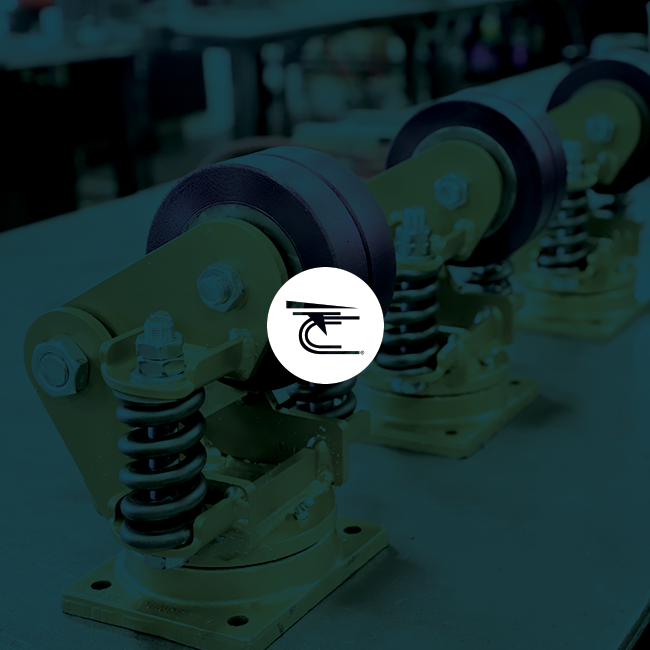

In the first part of this series discussing the differences between a traditional kingpin swivel caster and a kingpinless caster, we sought to establish the reasons why kingpin swivel casters have led the heavy-duty caster market for many decades. Like any long-ruling monarch, we also learned about the idiosyncrasies that make the reign of the kingpin swivel caster vulnerable to challengers.
Compared to its kingpin counterpart, the kingpinless swivel section provides a simpler design that also provides some definitive reliability benefits. This component is constructed of a top plate with a forged inner race; an outer race to which the legs are attached; and ball bearings between the two pieces. Unlike its counterpart, which requires a bolt or lug (known as a kingpin) to join the swivel section and support the swiveling motion, this unique design completely eliminates the need for such added infrastructure.
By having the kingpin removed, loads are distributed more evenly across the remaining components in the swivel section – enhancing its strength and making it immune to deformation, which could shear or snap the kingpin relative to the exertion of certain types of forces.
One such Achilles heel of the kingpin swivel section in a heavy-duty caster was when it would be under tow by a mechanical cart. In this application, using a traditional kingpin swivel caster can lead to shearing of the kingpin and overall failure of the caster. By utilizing the kingpinless design, the load that is placed on the caster is distributed over a surface area that is roughly three times that of the kingpin-supported section. A kingpin, on average is about 5/8-inch in diameter, producing a roughly 2-inch circumference about which the load is distributed; while the kingpinless section features a 2-inch diameter that provides a circumference of more than 6 inches.
The same benefit applies when considering the shock loading scenario; as the load is impacting the caster, the greater impact area gained by the kingpinless design allows for the caster to absorb more force without failure.
Beyond these technical aspects, kingpinless industrial casters offer a highly cost-competitive alternative to traditional towing casters. Additionally, by using common ball bearings instead of sealed precision ball or tapered bearings, the overall cost can be further mitigated without sacrificing capability or durability.
One notable downside of the kingpinless caster is its relative inability to support fine adjustments of the swiveling motion. Because the entire swivel section must be taken apart in order to place a “swivel restrictor” into the raceway, adjusting the swivel ability of the caster can prove to be difficult.
When you are unsure what swivel section is right for you, contact the engineering staff at Caster Concepts to assist with your decision-making process and provide you with a swivel section designed to meet your needs.